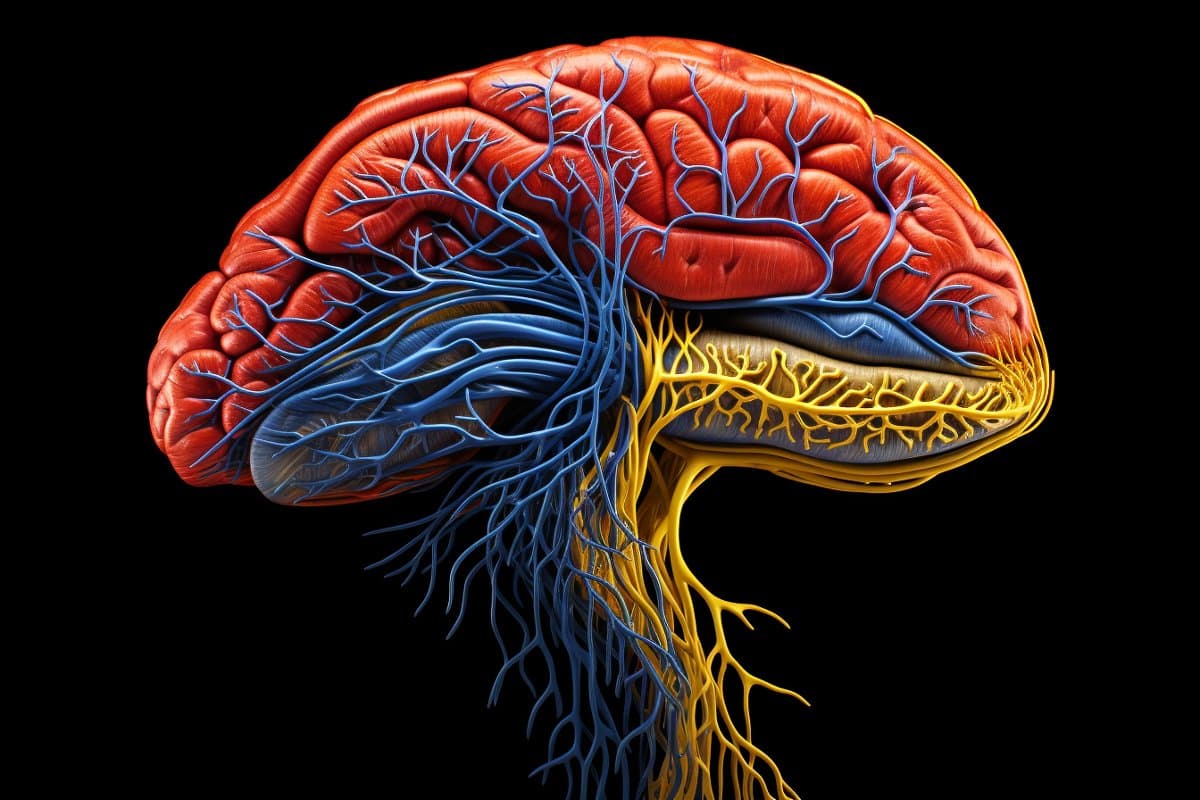If you have parallel pathways why hasn't your doctor used them to get you recovered?
Human Brain’s Unique Parallel Pathways
Summary: Researchers discovered a unique feature of the human brain’s communication networks: the transmission of information via multiple parallel pathways, a trait not observed in macaques or mice.
This finding emerged from a study using diffusion and functional MRI data, combined with information and graph theory. The team mapped “brain traffic” to compare signal transmission in different mammalian brains.
Their research indicates that these parallel pathways in humans might contribute to our advanced cognitive abilities and could have implications for understanding brain evolution and potential medical applications.
Key Facts:
- The EPFL study found that human brains uniquely transmit information through multiple parallel pathways, unlike macaques and mice.
- This discovery was made using a novel combination of diffusion MRI, functional MRI, information theory, and graph theory.
- The research suggests that these parallel pathways could contribute to higher cognitive functions and offer new insights into brain resilience and neurorehabilitation.
Source: EPFL
In a study comparing human brain communication networks with those of macaques and mice, EPFL researchers found that only the human brains transmitted information via multiple parallel pathways, yielding new insights into mammalian evolution.
When describing brain communication networks, EPFL senior postdoctoral researcher Alessandra Griffa likes to use travel metaphors. Brain signals are sent from a source to a target, establishing a polysynaptic pathway that intersects multiple brain regions “like a road with many stops along the way.”

She explains that structural brain connectivity pathways have already been observed based on networks (“roads”) of neuronal fibers. But as a scientist in the Medical Image Processing Lab (MIP:Lab) in EPFL’s School of Engineering, and a research coordinator at CHUV’s Leenaards Memory Centre, Griffa wanted to follow patterns of information transmission to see how messages are sent and received. In a study recently published in Nature Communications, she worked with MIP:Lab head Dimitri Van de Ville and SNSF Ambizione Fellow Enrico Amico to create “brain traffic maps” that could be compared between humans and other mammals.
To achieve this, the researchers used open-source diffusion (DWI) and functional magnetic resonance imaging (fMRI) data from humans, macaques, and mice, which was gathered while subjects were awake and at rest.
The DWI scans allowed the scientists to reconstruct the brain “road maps”, and the fMRI scans allowed them to see different brain regions light up along each “road”, which indicated that these pathways were relaying neural information.
They analyzed the multimodal MRI data using information and graph theory, and Griffa says that it is this novel combination of methods that yielded fresh insights.
“What’s new in our study is the use of multimodal data in a single model combining two branches of mathematics: graph theory, which describes the polysynaptic ‘roadmaps’; and information theory, which maps information transmission (or ‘traffic’) via the roads.
“The basic principle is that messages passed from a source to a target remain unchanged or are further degraded at each stop along the road, like the telephone game we played as children.”
The researchers’ approach revealed that in the non-human brains, information was sent along a single “road”, while in humans, there were multiple parallel pathways between the same source and target. Furthermore, these parallel pathways were as unique as fingerprints, and could be used to identify individuals.
“Such parallel processing in human brains has been hypothesized, but never observed before at a whole-brain level,” Griffa summarizes.
Potential insights for evolution and medicine
Griffa says that the beauty of the researchers’ model is its simplicity, and its inspiration of new perspectives and research avenues in evolution and computational neuroscience. For example, the findings can be linked to the expansion of human brain volume over time, which has given rise to more complex connectivity patterns.
“We could hypothesize that these parallel information streams allow for multiple representations of reality, and the ability to perform abstract functions specific to humans.”
She adds that although this hypothesis is only speculative, as the Nature Communications study involved no testing of subjects’ computational or cognitive ability, these are questions that she would like to explore in the future.
“We looked at how information travels, so an interesting next step would be to model more complex processes to study how information is combined and processed in the brain to create something new.”
As a memory and cognition researcher, she is especially interested in using the model developed in the study to investigate if parallel information transmission could confer resilience to brain networks, and potentially play a role in neurorehabilitation after brain injury, or in the prevention of cognitive decline in pathologies of advanced age.
“Some people age healthily, while others experience cognitive decline, so we’d like to see if there is a relationship between this difference and the presence of parallel information streams, and whether they could be trained to compensate neurodegenerative processes.”
About this neuroscience research news
Author: Celia Luterbacher
Source: EPFL
Contact: Celia Luterbacher – EPFL
Image: The image is credited to Neuroscience News
Original Research: Open access.
“Evidence for increased parallel information transmission in human brain networks compared to macaques and male mice” by Dimitri Van de Ville et al. Nature Communications
No comments:
Post a Comment